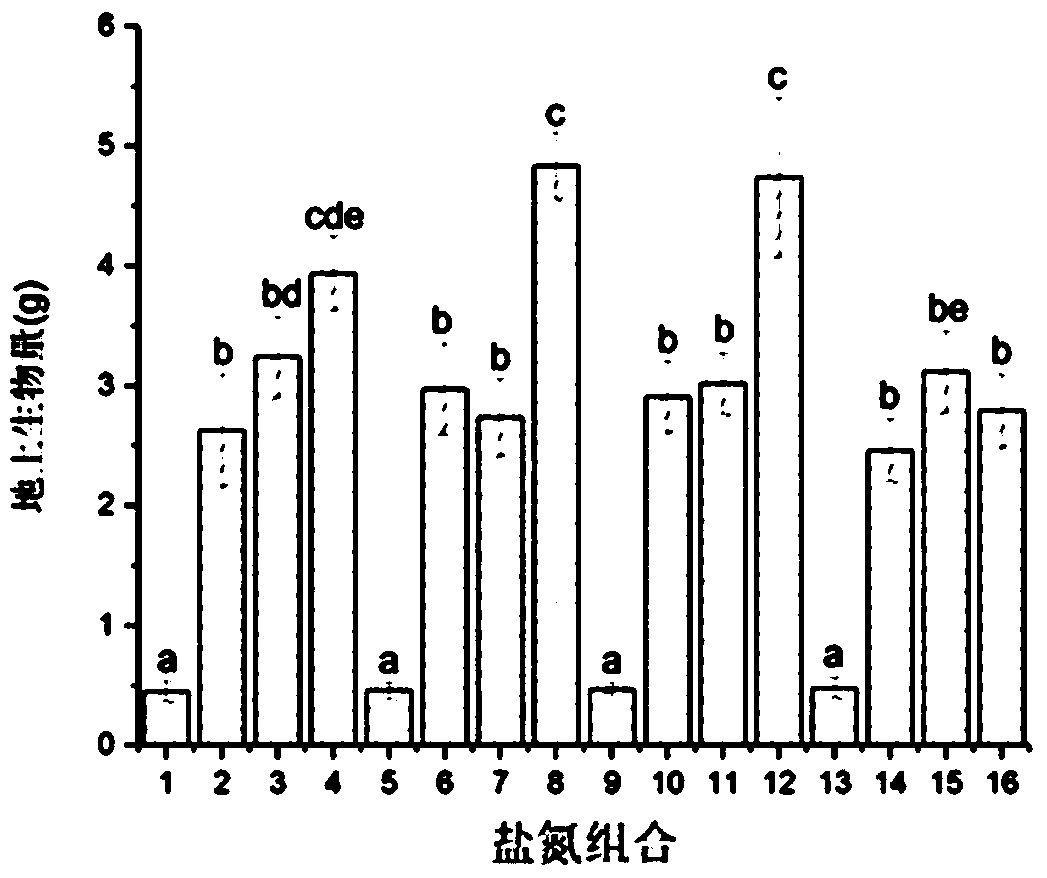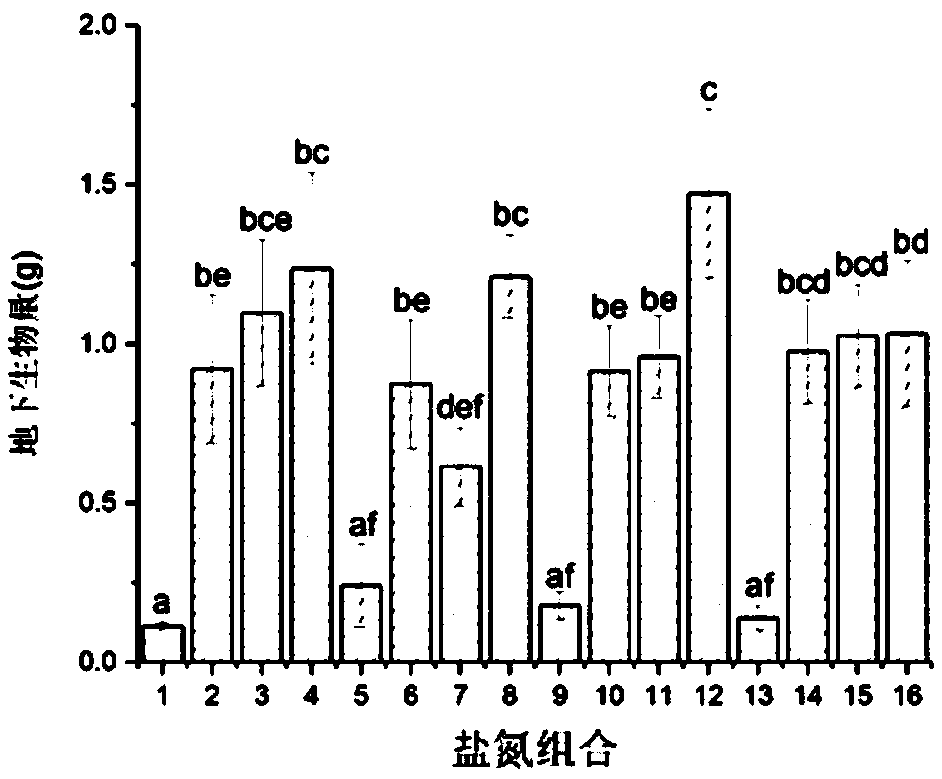Method for screening optimal salt-nitrogen conditions for young reed seedlings
A screening method, reed technology, applied in the field of screening optimal salt and nitrogen conditions for reed seedlings in saline-alkaline wetlands, can solve the problems of slow growth of seedlings and low survival rate of reeds, increase plant height and biomass accumulation, and solve the survival rate Low, conducive to rapid recovery and reconstruction effect
- Summary
- Abstract
- Description
- Claims
- Application Information
AI Technical Summary
Problems solved by technology
Method used
Image
Examples
specific Embodiment approach 1
[0016] Specific embodiment one: present embodiment is a kind of screening method of reed seedling optimal salt-nitrogen condition, is specifically finished according to the following steps:
[0017] 1. Collection of reed rhizomes: During the germination stage of reed rhizomes, dig out rhizomes through small patches, dig out to the extension of horizontal rhizomes, dig out rhizomes, and put them into black plastic bags , spraying water to keep the rhizome surface moist, to obtain the reed rhizome to be raised;
[0018] 2. Indoor seedling cultivation: wash and remove the soil on the surface of the rhizome of the reed to be raised, and then spread it on the surface of the sand. The depth of the sand is 50cm, and then use the sand to completely cover the rhizome of the reed to be raised. The temperature is controlled at 25 ± 3 Cultivate at ℃, during the cultivation process, ensure that the sandy soil surface is moist by spraying water, and obtain reed seedlings;
[0019] 3. Seedl...
specific Embodiment approach 2
[0021] Specific embodiment two: the difference between this embodiment and specific embodiment one is: during the budding period of reed rhizomes in late April every year, the rhizomes are dug out through small patches, and the roots are dug to the extension of the horizontal rhizomes After digging the rhizomes, put them into a black plastic bag, spray water to keep the surface of the rhizomes moist, and obtain the rhizomes of reeds to be raised. Others are the same as the first embodiment.
specific Embodiment approach 3
[0022] Specific embodiment three: the difference between this embodiment and specific embodiment one or two is that in step one, during the budding period of reed rhizomes in late April each year, goose head soaking in Momoge National Nature Reserve, Zhenlai County, Jilin Province In the reed swamp, select the reed seedlings to grow evenly, and dig out the rhizomes through small patches, and dig to the extension of the horizontal rhizomes. After digging the rhizomes, put them into black plastic bags, and spray water. Keep the surface of the rhizome moist to obtain the rhizome of the reed to be raised. Others are the same as those in Embodiment 1 or 2.
PUM
 Login to View More
Login to View More Abstract
Description
Claims
Application Information
 Login to View More
Login to View More - R&D
- Intellectual Property
- Life Sciences
- Materials
- Tech Scout
- Unparalleled Data Quality
- Higher Quality Content
- 60% Fewer Hallucinations
Browse by: Latest US Patents, China's latest patents, Technical Efficacy Thesaurus, Application Domain, Technology Topic, Popular Technical Reports.
© 2025 PatSnap. All rights reserved.Legal|Privacy policy|Modern Slavery Act Transparency Statement|Sitemap|About US| Contact US: help@patsnap.com



